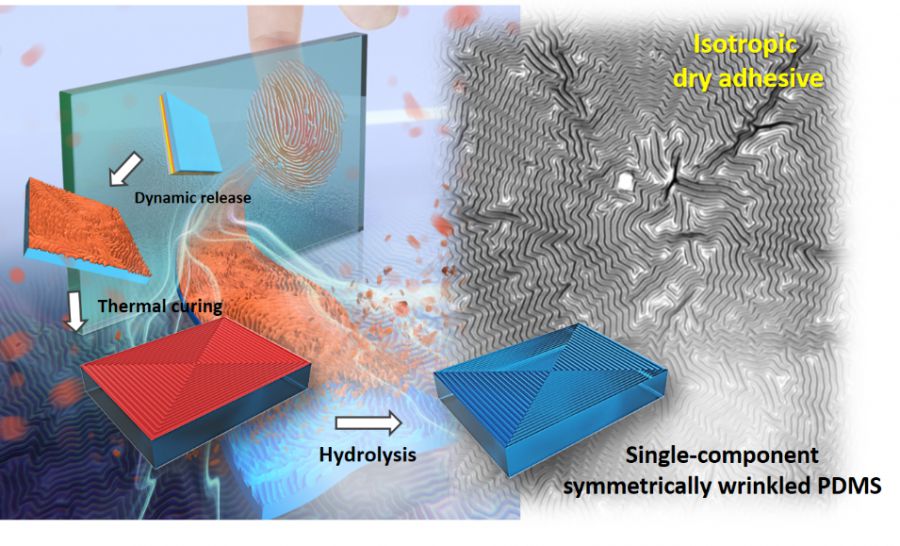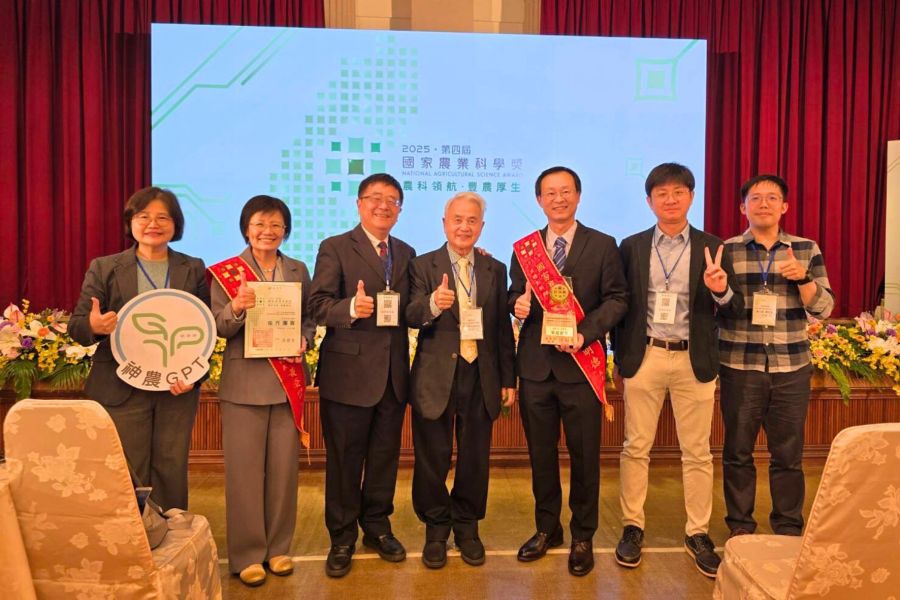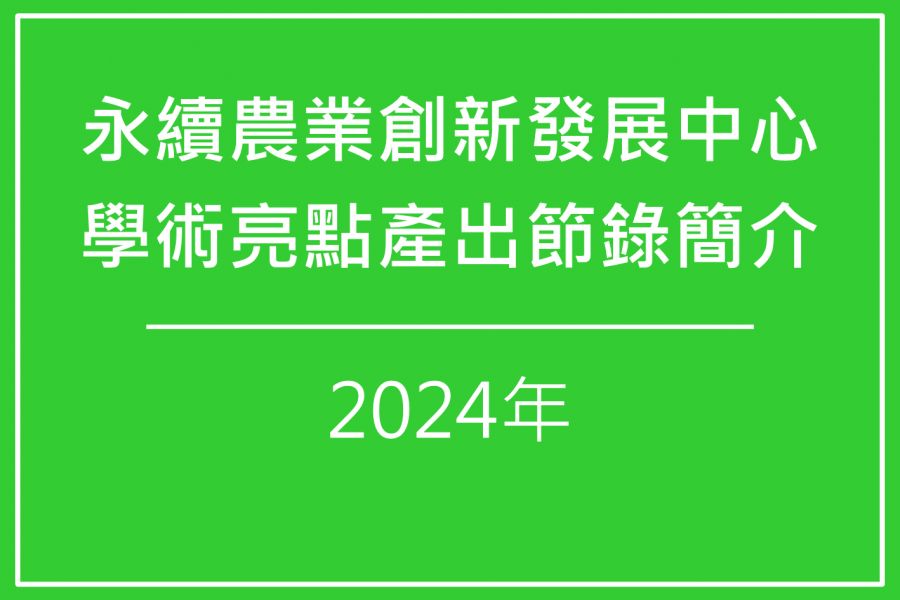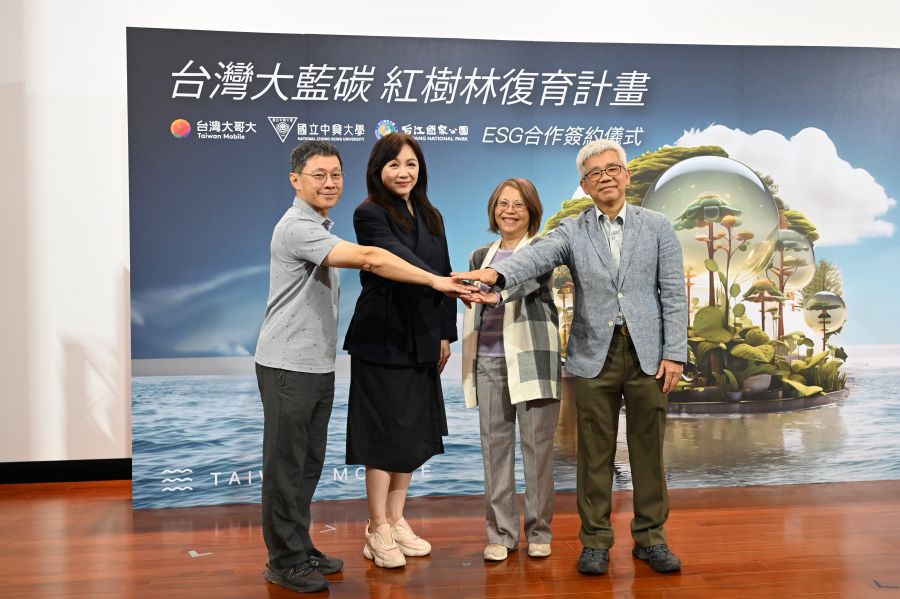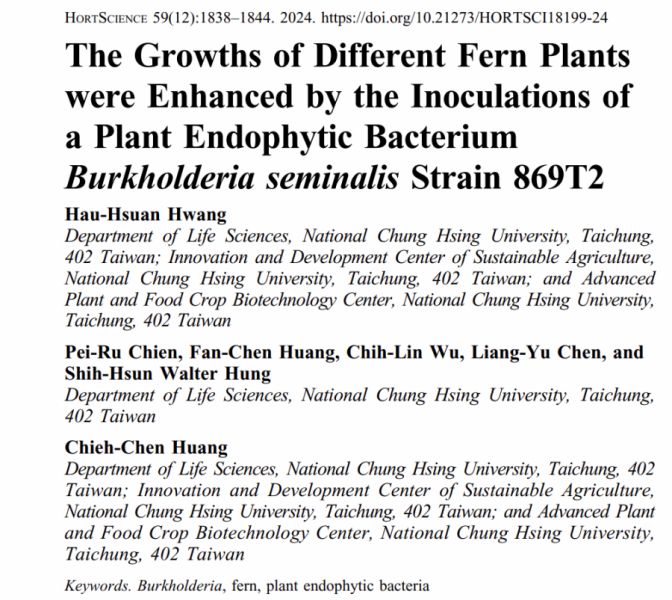新穎材料農業:友善環境農業新穎材料研發與安全評估【材料科學與工程學系/薛涵宇助理教授】
| 論文篇名 | 英文:Symmetrical Wrinkles in Single-Component Elastomers with Fingerprint-Inspired Robust Isotropic Dry Adhesive Capabilities 中文:指紋啟發-具對稱皺褶排整之單一組成軟質界面用於乾式黏著應用 |
| 期刊名稱 | ACS APPLIED MATERIALS & INTERFACES |
| 發表年份,卷數,起迄頁數 | 2020, 12(19), 22365-22377 |
| 作者 | Lin, Ching-Hsun; Huang, Ching-Yu; Ho, Jui-Yuan; Hsueh, Han-Yu(薛涵宇)* |
| DOI | 10.1021/acsami.0c04286 |
| 中文摘要 | 從靈長類指紋得到啟發,我們製備具表面特殊皺褶排整之乾式黏著材料。當靈長類開始直立而空出雙手可以進行抓取的時候,為了避免抓握時局部產生的過大表面張力,導致皮膚發扯破裂,因此需要產生指紋預留多餘的皮膚表面積,以應付抓握時產生的型變,大尺度的皺褶可以幫助抓住粗糙的表面並改善潮濕條件下的表面接觸,原本指尖的皺褶結構則可幫助局部表面排水,好比汽車輪胎胎紋或山坡溝壑,多皺指紋除了在水中抓撈物品具有功能優勢之外,對搭配手腳四肢的運用,對於攀爬濕滑樹幹也有實際幫助。由於皺褶雙層結構之表面多為硬質層,再多次拉扯後會造成表面破裂,因而降低乾式黏著的效力,有鑑於此,其表面硬質層必須除去,因此,我們選用可分解的高分子材料系統,如聚乳酸 (PLLA),以上述的濕式釋放過程得到一具有同心圓狀分布的PLLA/PDMS表面皺褶型態,經過二次加熱強化PDMS機械性質後,經水解移除PLLA硬質層,即可得到具如同指紋表面的PDMS皺褶表面 ,由於其不具有硬質層,且PDMS為一柔軟可撓曲的材料,做為乾式黏著元件,具有可重複使用、表面自我清潔、柔軟與等向性乾式黏著能力等特性,在仿生肌膚與軟性電子元件等方面具有高度的應用潛力。 |
| 英文摘要 | Robust and inexpensive dry adhesives have a great potential in multitudinous industrial applications. However, to date, the fabrication of dry adhesives, prepared using high aspect ratio structures in general, requires specific equipment and time-consuming processes, which limit their practicable utilization. Inspired from human fingerprints, in this study, we created durable single-component elastomer surfaces with symmetric and multiple concentric-shaped wrinkled patterns that exhibit isotropic dry adhesion capabilities. The dynamic interfacial release-induced surface wrinkling property of a rigid degradable polymeric capping layer [i.e., poly(l-lactide) (PLLA)] was exploited on a soft elastomer substrate [i.e., polydimethylsiloxane (PDMS)] to spontaneously form wrinkled PLLA/PDMS bilayer composites. After conducting a two-step thermal curing process on the composite and hydrolysis of the PLLA capping layer, a single-component microwrinkled PDMS surface with a large area and symmetric patterns could be generated. The patterns show flexible, durable, and isotropic dry adhesion capabilities that could be controlled by tuning their geometrical parameters (wrinkle wavelengths and amplitudes) and elastic modulus. In particular, the formation of symmetrically wrinkled patterns without using expensive lithography for patterning and costly material precursors is an advantage and could be extended to other industrial applications, such as damage-free transportation, biomimetic climbing robots, and biocompatible medical patches. |
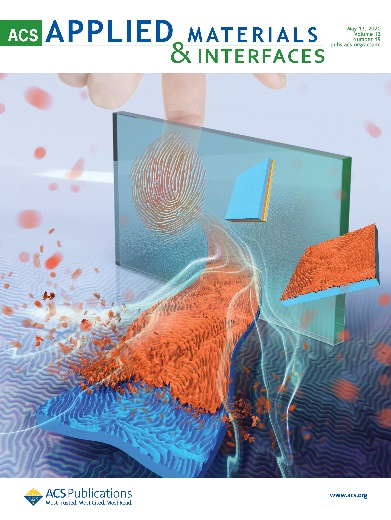
Supplementary Cover Image

